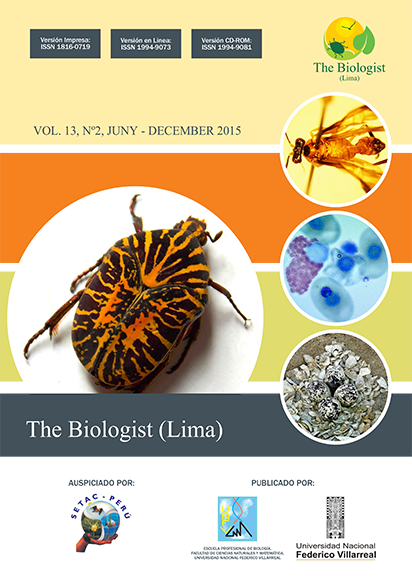TEXTILE EFFLUENT TREATMENT BY COAGULATION-FLOCCULATION USING STARCH OF TRITICUM AESTIVUM L. AS AID IN THE PROCESS
DOI:
https://doi.org/10.24039/rtb20151321550Keywords:
Alumin, Coagulation, Flocculation, Polyamines, Starch, Textil effluent, Triticum aestivumAbstract
Textile effluents from Franky & Ricky S.A (Arequipa-Peru) were treated using coagulationflocculation process by the two commercial agents Perifloc and Al2 (SO4)3, and Triticum aestivum L. starch as an aid of the process. The treatment capacity was determined by the degree of removal of Chemical Oxygen Demand (COD), Biological Oxygen Demand (BOD5), Total Suspended Solids (TSS), pH, and light absorbance (Coloration level). Due to the variance of textile effluent COD, BOD, TSS and coloration, two different optimal doses were established for effluents with high and low coloration of dyes, being 18 and 12 mg·L-1 for Perifloc, and 150 and 50 mg·L-1 for Al2(SO4)3 respectively. The use of T. aestivum starch showed good ability to support textile treatment process effluents when applied to half of the optimal dose of Perifloc at 0.5 g · L-1 for the case of effluents with high loading dye and 0.05 g · L -1 for low load, achieving good characteristics treated effluent for discharge to sewer systems according to the MPVs; however, good results were not achieved in its implementation over half of the optimal dose of the agent Al2(SO3)4, being positive for treating effluents with low load dye effects, only achieving a minimum level of aid applied 0, 05 g · L-1 starch about half the optimal dose (150 mg · L-1) corresponding to the treatment of effluents with high load textile dye.
Downloads
Downloads
Published
How to Cite
Issue
Section
License

This work is licensed under a Creative Commons Attribution-NonCommercial-NoDerivatives 4.0 International License.
Objeto: El AUTOR-CEDENTE transfiere de manera TOTAL Y SIN LIMITACIÓN alguna al CESIONARIO (Revista The Biologist (Lima)) los derechos patrimoniales que le corresponden sobre sus obras por el tiempo que establezca la ley internacional. En virtud de lo anterior, se entiende que el CESIONARIO adquiere el derecho de reproducción en todas sus modalidades, incluso para inclusión audiovisual; el derecho de transformación o adaptación, comunicación pública, traducción, distribución y, en general, cualquier tipo de explotación que de las obras se pueda realizar por cualquier medio conocido o por conocer en el territorio nacional o internacional.
Remuneración: La cesión de los derechos patrimoniales de autor que mediante este contrato se hace será a título gratuito.
Condiciones y legitimidad de los derechos: El AUTOR-CEDENTE garantiza que es propietario integral de los derechos de explotación de la(s) obra(s) y en consecuencia garantiza que puede contratar y transferir los derechos aquí cedidos sin ningún tipo de limitación por no tener ningún tipo de gravamen, limitación o disposición. En todo caso, responderá por cualquier reclamo que en materia de derecho de autor se pueda presentar, exonerando de cualquier responsabilidad al CESIONARIO.
Licencia de acceso abierto: El AUTOR-CEDENTE autoriza que manuscrito publicado en la Revista Científica The Biologist (Lima) (versión Impresa ISSN 1816-0719, versión en línea ISSN 1994-9073) permanece disponible para su consulta pública en el sitio web http://revistas.unfv.edu.pe/index.php/rtb/index y en los diferentes sistemas de indexación y bases de datos en las que la revista tiene visibilidad, bajo la licencia Creative Commons, en la modalidad Reconocimiento-No comercial- Sin Trabajos derivados –aprobada en Perú, y por lo tanto son de acceso abierto. De ahí que los autores dan, sin derecho a retribución económica, a la Escuela Profesional de Biología, Facultad de Ciencias Naturales y Matemática de la Universidad Nacional Federico Villarreal (EPB - FCCNM - UNFV), los derechos de autor para la edición y reproducción a través de diferentes medios de difusión.









































